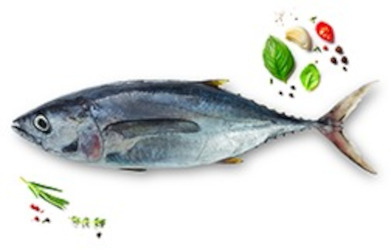

Add Products worth ₹130 to make Delivery Free
![Shrimp scad [TN]](https://mathafresh.com/themes/images/product/512_512_20210723040941pm_shrimp_scad_vattapara-onlinefish-kochi-kerala.jpg)
The shrimp scad is a species of widespread tropical marine fish of the jack family, Carangidae. The shrimp scad is widely distributed in the tropical and
subtropical western Indian Ocean and areas of the eastern Pacific Ocean, ranging from South Africa in the west to Hawaii in the east, including Japan and Australia
to the north and south. The species is commonly found on inshore reefs and sandy substrates. It has the common body
profile of a scad, and may be difficult to differentiate from others in the
genus Alepes. It is one of the larger scads, growing to
40 cm, but often is encountered at much smaller sizes. The shrimp scad
often forms large schools, and is carnivorous, consuming a variety of crustaceans and small fish. It is of moderate importance to fisheries throughout its range. The colour of the body is
an overall silver colour, with a green-blue tone on the upper body, while the
underside fades to a more white colour. There is a diffuse dusky blotch on
margin of operculum which is bordered by a smaller white spot.
The spinous dorsal fin, including the last dorsal fin spine is blackish or
dusky, the soft dorsal fin is blackish or dusky above the scaly sheath and the
margin of first to fourth upper soft rays is whitish. The middle portion of the
anal fin below the scaly sheath is slightly blackish or dusk. The caudal fin is often a striking yellow, especially when fresh, with
the upper caudal lobe often fading to a darker shade. The posterior scutes may
also be a yellow to rusty colour, especially after removal from the water.
This fish resembles Indian mackerel when seen for the first time. The
shrimp scad is known to be a migratory species, with records from India indicating the
fish resides and feeds in the waters of Madras from September to May, before migrating elsewhere
to spawn. The shrimp scad
feeds on a variety of prey, with at least two shifts in diet occurring as the
fish mature. Older individuals feed mainly on young fishes, crustaceans The
species is of moderate commercial interest in most countries
where it is often considered too small to be worthwhile and is often caught on
hook and line tackle and in seines as bycatch. In Indian fisheries, the shrimp
scad accounts for 43% of the carangid catch in purse seines, however is rarely
taken by trawls or gill nets. It is also often taken by subsistence fisheries
using various traditional gear such as inter-tidal fixed stake traps. Around the Asian and Indonesian coasts, larger
numbers are taken than anywhere else in its range and it is considered a good
eating fish